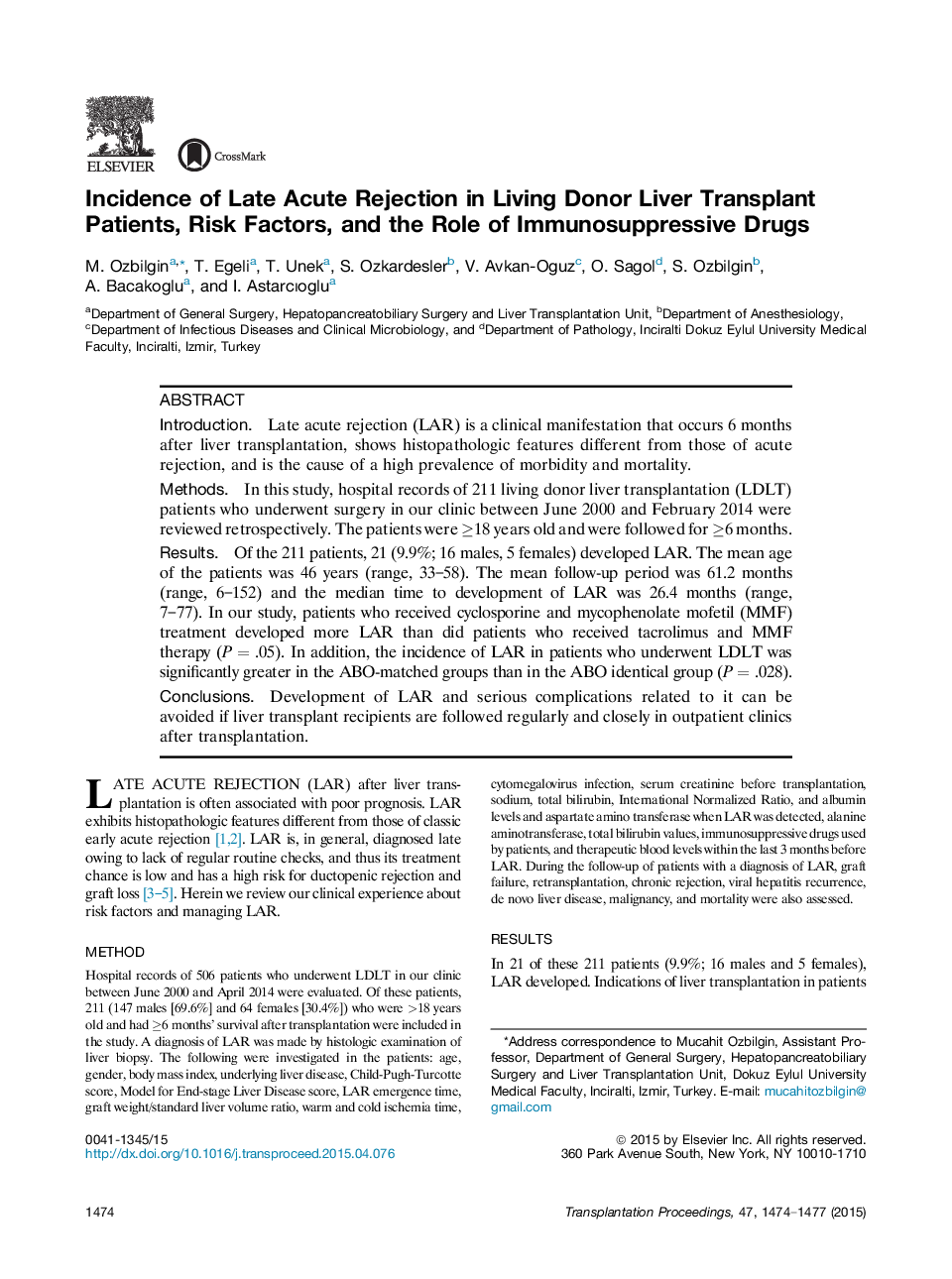| Article ID | Journal | Published Year | Pages | File Type |
|---|---|---|---|---|
| 4257408 | Transplantation Proceedings | 2015 | 4 Pages |
IntroductionLate acute rejection (LAR) is a clinical manifestation that occurs 6 months after liver transplantation, shows histopathologic features different from those of acute rejection, and is the cause of a high prevalence of morbidity and mortality.MethodsIn this study, hospital records of 211 living donor liver transplantation (LDLT) patients who underwent surgery in our clinic between June 2000 and February 2014 were reviewed retrospectively. The patients were ≥18 years old and were followed for ≥6 months.ResultsOf the 211 patients, 21 (9.9%; 16 males, 5 females) developed LAR. The mean age of the patients was 46 years (range, 33–58). The mean follow-up period was 61.2 months (range, 6–152) and the median time to development of LAR was 26.4 months (range, 7–77). In our study, patients who received cyclosporine and mycophenolate mofetil (MMF) treatment developed more LAR than did patients who received tacrolimus and MMF therapy (P = .05). In addition, the incidence of LAR in patients who underwent LDLT was significantly greater in the ABO-matched groups than in the ABO identical group (P = .028).ConclusionsDevelopment of LAR and serious complications related to it can be avoided if liver transplant recipients are followed regularly and closely in outpatient clinics after transplantation.
